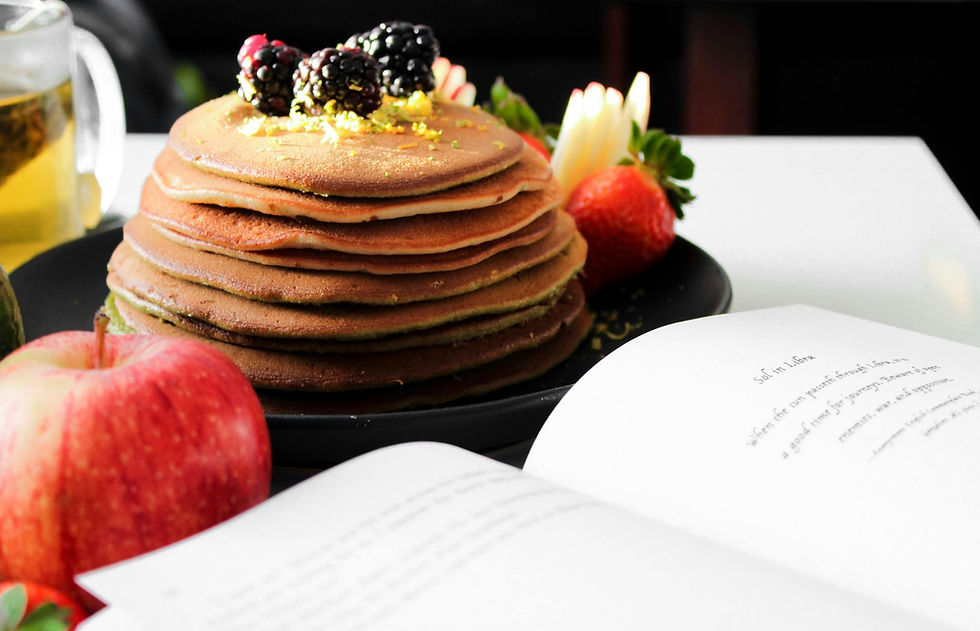How Our Fave Fictional Foods Delightfully Serve Well
- Chona

- Sep 11, 2025
- 2 min read
If you’ve ever wondered how addictive Narnia’s Turkish Delight could be or how Alice’s “Eat Me” cake and “Drink Me” potion tasted, you’re in luck. Let's dig in and uncover the Creatinuum Episode 57, “Good Enough to Eat!: On Our Favorite Fictional Foods.”

Photo by Jane T D.
Let’s Start with Some Drinks
Imagine lazy rafting on Willy Wonka’s rich and turbid “Chocolate River.” Imagine seeing the whimsical garden, full of edible flora around it, and sniffing a symphony of food aroma. Imagine falling into the river, smelling the confectionery sweetness and savoring its thick and creamy taste.
Foods as Characters
Foods are characters themselves in the story. They are silent actors that only talk when the aftermath of their magic is felt. No one knew that eating the lotus flower in Percy Jackson could make people so absorbed in the moment—losing their sense of time, forsaking their purpose, and forgetting their memory—until they did. Or how Ratatouille’s dish could bring back memories long forgotten—until it did.
Foods as Representation
Sometimes, though, they don’t have to be magical—just representational. Fictional foods may symbolize a culture, set an atmosphere, or reveal a character’s trait or preference. And even then, they help the audience make sense of the storyline. Better yet, they make it more interesting.
They Show, Not Just Tell
The made-up edibles in our favorite stories unsurprisingly make the narrative noteworthy, not despite their mere existence but because they are food. They add another flavor to the plot (pun intended)—potentially stealing the spotlight of the performance because of the unique part they play. They help show, not just tell, events, effectively stirring the story forward as an essential part, not as mere added visionary effects.
They activate the senses and facilitate the audience's imagination, making them taste (or curious about) their mouthwatering (sometimes odd) ingredients, even though they were only make-believe. How many times have you become curious about the food you read about because the author so intrinsically described it to you, you ended up wanting to actually eat or avoid it at all costs? Bet you’ve wondered what the weird flavors of Willy Wonka’s meal-in-a-gum ever tasted like?
Bon Appétit!
These foods, along with the prolific skill of the authors, become a perfect recipe for delightful stories. And if they stick with the audience enough, they become unforgettable. Oh, if only you could make them appear right in front of your eyes as you order them to. But they’re just that—fictional—and who actually knows the exact method to prepare them? They may only remain on the pages of the book or the movie screens, but they stick to the junkies’ minds. And despite them being just fictional and not having the capacity to savor the taste buds literally, boy, do they serve the imagination so deliciously well.
PS: When you make a good story with great fiction food, you can do your readers a favor by including their recipe.
Now that would make for a satisfying takeout!
Listen in full to Creatinuum Episode 57, “Good Enough to Eat!: On Our Favorite Fictional Foods” available on Simplecast, Spotify, Apple, and other platforms.









Comments